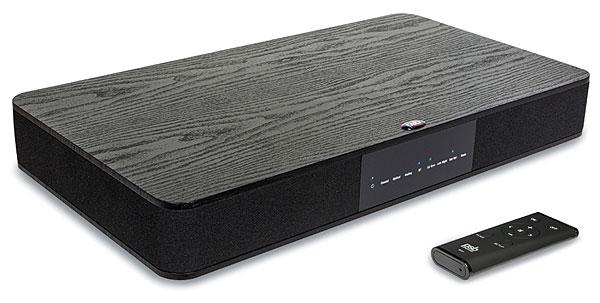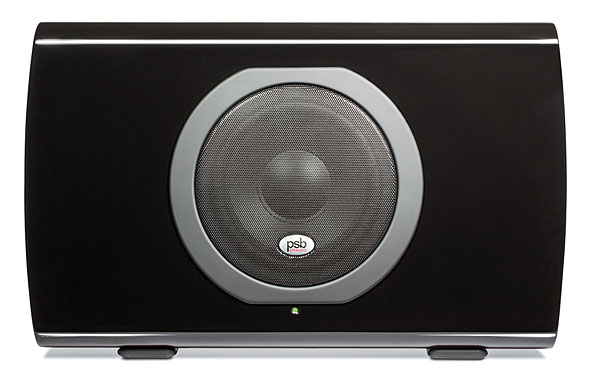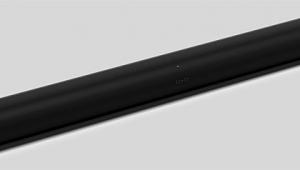If you're in the market for a new phone, you won't want to miss our guide to Oppo USA ! We've got all the latest information on Oppo's top-performing smartphones, including their cutting-edge features, sleek designs, and impressive camera capabilities.
PSB Alpha VS21 VisionSound Soundbase and SubSeries 150 Subwoofer Review

AT A GLANCE
Plus
Sound that transcends genre
Subtle surround and dialogue modes
Flat sub hugs the wall
Minus
No front-panel controls
No tone controls
Too small for larger TVs
THE VERDICT
The PSB Alpha VS21 and SubSeries 150 might change your mind about whether soundbases and compact subs are suitable for music.
Soundbases and bars help the audio industry stay relevant to consumers. Maybe not everyone is interested in traditional loudspeakers and receivers, but most people have a flat-panel TV, and all but the least observant of those people have noticed that the built-in speakers produce sound that is less than coherent. Many of those consumers may not know that PSB has been producing great-sounding audio products for decades, so we have a fundamental disconnect between a brand that is (relatively) unrecognized by newbies and a product category that attracts them. What will it take to bring a PSB soundbase to the newbies? Maybe their better-informed friends who read Sound & Vision should have a word with them—especially when they’re seen pulling a big flat-panel TV box out of the hatchback. Just sayin’.
Atlas Does Not Shrug
The compact PSB Alpha VS21 VisionSound is made for smaller TVs. It handles sets weighing less than 88 pounds and is said to provide a good sonic match for screens up to 50 inches. Where you might run into trouble is fitting your flat-panel’s pedestal base or legs onto its small 21.38 x 13-inch resting surface with a bit of room to spare for safety—measure carefully, or plan on putting it on its own shelf below the TV. The PSB’s heavily braced, vinyl-clad fiberboard casing is several cuts above cheap plastic enclosures. The cloth grille wraps around the cabinet, leaving space in front for a row of pinpoint LED indicators. When the unit powers up, the multicolored LEDs light up en masse, which is kind of endearing.
There are no controls on the unit itself—possibly a problem if you lose your remote. On the other hand, along with responding to the supplied remote, the PSB can be programmed to learn commands from your existing TV, cable box, or satellite box remote, so in all likelihood you’ll be able to put your hands on one or the other. The smallish remote has buttons for on, off, listening mode, setup, and mute, as well as a navigation ring that includes volume and input selection. Big plus: The buttons aren’t the pain-in-the-neck membrane type, but the remote does use a painin-the-neck coin cell battery in lieu of easier-to-find AAA cells.

The back panel doesn’t have HDMI connections but does have digital optical, digital coaxial, and stereo analog RCA inputs—one each—plus a subwoofer output. There’s also a Mini USB input for service use only. Bluetooth is supported with the higher-quality aptX codec, useful if you have an aptX-compliant source.
Behind the grille are two three-way speaker systems with three pair of drivers. They include 0.75-inch textile-dome tweeters, 2-inch treated-paper-cone midranges, and 4-inch treated-paper-cone woofers that fire out the bottom of the cabinet. Electronic crossover points are 3 kilohertz from midrange to tweeter, and 350 hertz between midrange and woofer. Bass response is claimed down to 40 Hz (see our measurements). [Ed. Note: PSB rates that bass output of 40 Hz at the –10 dB point, which makes it not very loud or of much impact. We measured the –10 dB point at a higher 50 Hz, and our conventional –3 dB and –6 dB points at 60 Hz and 54 Hz, respectively. See Test Bench.]
Each driver has its own 17watt RMS amplifier and limiter/compressor, for a total system output capability of just over 100 watts, though PSB says the system typically consumes just 10 watts, even at high levels. When the system isn’t used for 20 minutes, it goes into standby mode at an energy-saving 0.5 watt. Standby can be disabled if you get a lot of long phone calls.
Modes à la Mode
The VS21 has Dolby Digital 5.1 decoding on board. The surround effects from this kind of one-piece product are usually limited. (There are reasons why people still buy 5.1-channel speaker systems and AVRs.) When receiving a Dolby Digital multichannel signal, the unit performs its own stereo mixdown. It accepts other formats only when the source component converts them to stereo PCM (generic digital).
In lieu of the usual faux-surround mode, VisionSound offers a WideSound mode. Paul Barton, PSB’s founder and chief designer, describes WideSound as “a DSP algorithm that extracts the left-channel-only and right-channel-only signals and manipulates and re-inserts this information into the opposite channel with some phase shift. The result is that the soundstage is perceived to be wider than the location of the source. The distance between the left and right channels is taken into account with this processing.”
The Dialogue mode exploits hearing research from Canada’s National Research Council and boosts “dialogue clarity frequencies” by 3 decibels, which is subtle enough not to totally bend frequency response out of shape. The Dolby Late Night mode employs Dolby Digital’s built-in dynamic range control (not the newer Dolby Volume). It uses flags (unfortunately only embedded in Dolby Digital content) to reduce the variation between soft and loud sounds, making it easier to reconcile dialogue and effects when playing a movie at low volume. Dolby Late Night is accessible from the setup menu, which requires holding down the remote’s setup button for five seconds. The menu also allows activation of the sub output. Doing so restricts the internal speakers to operating only above 80 Hz, and with a 500-Hz low-pass filtered output, essentially leaves adjustment of blending with the sub to the sub’s own crossover control. There’s also a lip-sync mode, which adds delay in 10-milisecond increments up to a maximum of 110 ms.

White legends printed on the front panel identify the LED indicators of these modes along with those of the three inputs, Bluetooth, and the selected listening mode. Some bases and bars identify listening modes by flashing their cryptic acronyms on the front panel. With no alphanumeric display, VisionSound instead changes the Mode LED’s color-coding: no LED for Stereo, amber for Dialogue, green for WideSound, and blue for WideSound Plus, which combines the WideSound and Dialogue modes. The Mode LED is at far right, where it’s easy to see, so you always know where you stand with this system. One feature I missed was a numeric meter or bar indicator for volume level; it’s impossible to see where you are on the volume scale.
The SubSeries 150 subwoofer has a slim form factor less than 4 inches deep. It can be placed against the wall, standing vertically on movable rubber feet, placed lying horizontally, or mounted to the wall with supplied hardware. Build quality is quite impressive. Inside the glossy, heavy, sealed enclosure are a 6.5-inch polypropylene-cone driver behind a perforated metal grille and a 100-watt RMS amplifier. Although this is a small sub, it’s not under-featured. The convenient top-mounted (when vertical) controls include volume, 50- to 150-Hz crossover, power toggle, and continuously variable phase (not just 0° and 180°). The inputs are supplied with shorting plugs, which reduces noise from those not currently in use. PSB says the sub reaches 26 Hz at –3 dB; see our measurements. [Ed. Note: We measured –3 dB at 31 Hz,somewhat near the spec and quite impressive for a sub with such a svelte form factor.]
- Log in or register to post comments
































































